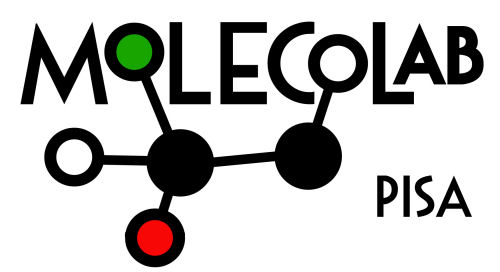![]() In photoreceptors, light is used to activate a downstream signal transduction event. While using different chemistries, and signaling modes, photosensors share common features to achieve this goal. They are molecular machines comprised of sensory domains which contain the absorbing chromophore(s) and effector modules. Conformational changes induced by photon absorption are transmitted from the chromophore binding pocket to the exterior of the protein matrix thus weakening its binding or folding stability. In our group we develop multiscale strategies to follow the whole process from the very first electronic excitation in the embedded chromophore to the final large structural change in the protein. To reach this goal we combine (non)adiabatic QM/MM MD simulations with fully classical (MM) MD and enhanced sampling techniques. In the years we have investigate phytochromes, blue-light-utilizing flavin (BLUF) systems and the orange carotenoid protein (OCP) used in the photoregulation of photosynthetic cyanobacteria.
In photoreceptors, light is used to activate a downstream signal transduction event. While using different chemistries, and signaling modes, photosensors share common features to achieve this goal. They are molecular machines comprised of sensory domains which contain the absorbing chromophore(s) and effector modules. Conformational changes induced by photon absorption are transmitted from the chromophore binding pocket to the exterior of the protein matrix thus weakening its binding or folding stability. In our group we develop multiscale strategies to follow the whole process from the very first electronic excitation in the embedded chromophore to the final large structural change in the protein. To reach this goal we combine (non)adiabatic QM/MM MD simulations with fully classical (MM) MD and enhanced sampling techniques. In the years we have investigate phytochromes, blue-light-utilizing flavin (BLUF) systems and the orange carotenoid protein (OCP) used in the photoregulation of photosynthetic cyanobacteria.
Three selected publications
Deciphering Photoreceptors Through Atomistic Modeling from Light Absorption to Conformational Response
Salvadori, G.; Mazzeo, P.; Accomasso, D.; Cupellini, L. & Mennucci, B.
Journal of Molecular Biology, 436, 168358 (2024)
Protein control of photochemistry and transient intermediates in phytochromes
Salvadori, G.; Macaluso, V.; Pellicci, G.; Cupellini, L.; Granucci, G. & Mennucci, B.
Nat. Commun. 13, 6838 (2022)
Molecular Mechanisms of Activation in the Orange Carotenoid Protein Revealed by Molecular Dynamics.
Bondanza, M., Cupellini, L., Faccioli, P. & Mennucci, B.
J. Am. Chem. Soc. 142, 21829–21841 (2020)
